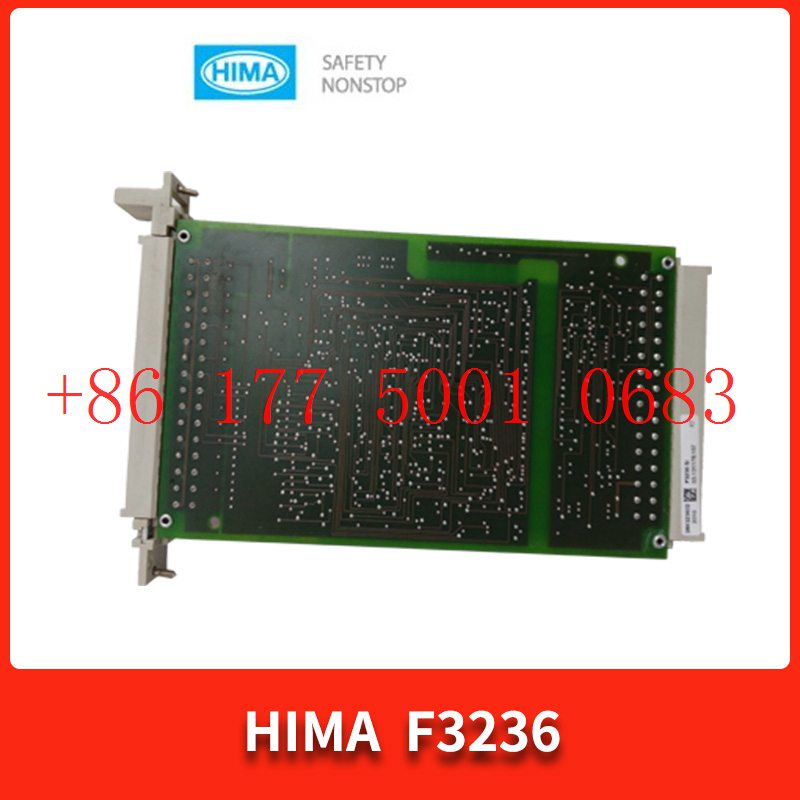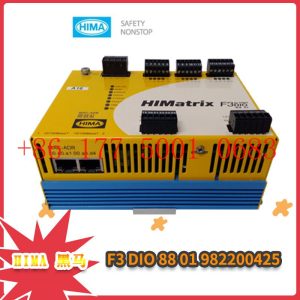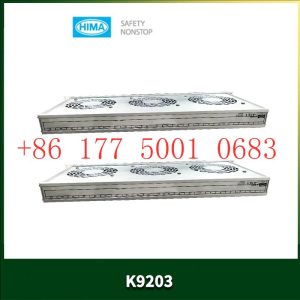Description
F3331 HIMA security module
F3331 HIMA security module
Module Clips Drive controller servo motor
Contact: Mr. Lai
Wechat:17750010683
Whats app:+86 17750010683
Skype:+86 17750010683
QQ: 3221366881
3221366881@qq.com
Robots perform pre planned specific tasks, such as assembly line work, surgical assistance, warehouse pickup/retrieval, and even dangerous tasks such as clearing landmines. Today”s robots are not only capable of handling highly repetitive tasks, but also capable of completing complex functions that require flexibility in direction and movement. With the advancement of technology, the improvement of speed and flexibility, and the reduction of costs, robots will gradually be widely adopted. The cost advantage lower than manual labor also shows us the dawn of the robotics industry. In addition, the advancement of machine vision, computing power, and networks will also promote the popularization of robot applications.
The implementation of these high-performance robots benefits from improvements in the following aspects:
1. Complex sensors;
2. Implement real-time decision-making and action computing capabilities and algorithms; F3331 HIMA security module
3. Motors that rapidly and accurately improve mechanical power to achieve complex tasks;
When selecting specific motor types and models, designers should consider three primary factors:
1. The minimum and maximum speed (and acceleration) of the motor;
2. The maximum torque that the motor can provide and the relationship between torque and speed curve;
3. Accuracy and repeatability of motor operation (without sensors and closed-loop control);
Of course, there are many other important factors to consider when choosing a motor, such as size, weight, and cost. For almost all small to medium-sized robot drivers, the choice of driving motor usually includes brush DC motor, brushless DC motor (BLDC), and stepper motor. However, in some cases, hydraulic and pneumatic machines are the best choices
Brushed DC motors are the oldest DC motor technology, the simplest and lowest cost. Due to the contact between the brush and the rotor, the rotation of the motor rotor will switch (reverse) the winding magnetic field around the rotor. The speed of a motor is a function of applied voltage, so the driving requirements are not high, but managing torque is difficult. Due to factors such as brush wear, the need for cleaning and maintenance, and the possibility of becoming a source of electronic noise (electromagnetic interference), there are also reliability issues during operation. Due to these issues, in most cases, brushless DC motors have become the least attractive choice in robot design.
Brushless DC motors emerged in the 1860s due to two developments: firstly, the emergence of sturdy, compact, and low-cost permanent magnets; The second is the emergence of small and efficient electronic switches (usually MOSFETs) to switch the current flowing to the winding. The “electronic commutation” replaces the mechanical commutation of the brush motor to control the switching of the magnetic field, and the interaction between the fixed switching coil and the magnet on the rotating core replaces the mechanical commutation of the brush motor, which utilizes the interaction between the magnetic field and the electric field. By changing the switching frequency of MOFSET, the motor speed can be controlled. In addition, compared to brushless motors, their motor controllers can better control motor performance.
Even better, advanced algorithms such as PID (Proportional Integral Differential) correction algorithm or FOC (Field Oriented Control, sometimes also known as Vector Control) control algorithm can be solidified into motor controllers. This matches the ideal motor operation with the actual load and load changes, thereby making the motor performance more powerful and accurate. For example, motor control algorithms/programs can take into account factors such as rotor inertia, and enable the motor driver to adapt and gradually reduce errors caused by mechanical factors. This algorithm makes it possible to accurately control acceleration and torque.
Compared to brushless motors, brushless motors (BLDCs) require more complex control circuits but can exhibit better performance. Usually, BLDC motors need to be equipped with a position feedback sensor, such as a Hall effect sensor, optical encoder, or back electromotive force detection device. F3331 HIMA security module
Another commonly used BLDC motor in robots is a stepper motor, which uses a switch type electromagnet located next to the central magnetic core of the permanent magnet ring. The stepper motor does not “rotate” in the usual way; But with the help of continuously rotating shafts, the rotational speed can be gradually increased, so that a certain angle of rotation or continuous rotation can be achieved. The stepper motor has repeatable motion control; You can return to the previous position when needed.
The step angle range is 1.8 ° (200 steps/revolution) to 30 ° (12 steps/revolution), and the step angle or number of steps depends on the number of permanent magnets the motor has, but values outside this range can also be achieved.
For stepper motors, if they are powered on but have no stepper direction, they will remain in their original position; The stepper motor can provide high torque at low rpm. The most direct way to compromise the rotation of the motor is to orderly turn on and off the electromagnet, but this may cause shaking or vibration. There is some overlap in the application fields of brushless motors and stepper motors. Stepping motors are more suitable for applications that require precise forward and backward movements such as picking and positioning, rather than areas that require long-term continuous rotation. They are also suitable for small applications that do not require the motor to provide high torque or speed. In addition, stepper motors have lower energy efficiency requirements than brushless DC motors. In addition to the motors listed here, there are many other types to choose from. There are many and complex motor series, with many branches. For example, a permanent magnet synchronous motor (PMSM) is a combination of a brushless DC motor (relative to the rotor) and an AC induction motor (relative to the stator structure). It has the characteristics of high energy efficiency, high relative density per small volume, torque to weight ratio, fast response time, and relatively easy control, but its price is also relatively high.
The robot motion system not only involves motors, but also includes three main functional modules.
1. Real time controller, manifested in the following three forms.
A fast computing processor for general use, running motion control firmware;
Application in control, DSP oriented FPGA;
A dedicated controller IC circuit with hard wiring and built-in algorithms.
2. One or more cascaded driver layers to extract low-level signals from the controller output and then output the high voltage/current required to control the on-off of electronic devices.
3. MOSFET (or other switching devices, such as IGBT or bipolar transistor), which controls the current flowing to the motor winding.
The specific selection of MOSFETs mainly depends on the current and voltage required by the motor and winding. After determining the MOSFET model, select the driver, which is determined by the rated value of the MOSFET; Sometimes a series of boost drivers may be required, depending on the size of the MOSFET.
3. Possible issues encountered when selecting controllers
The selection of controller model is also very strategic, and a decision needs to be made before selecting a specific supplier and model. There are many trade-offs when choosing whether to use a general-purpose processor solely for motor control, an FPGA with high computing power, or a dedicated control IC circuit (usually from a specific motor control supplier). Designers need to consider factors including:
What complexity control algorithm do you need and how many I/O ports do you have?
Who will provide control algorithms and code: is it an IC supplier, third-party partner, or an unrelated third-party developer? How do they confirm and verify the performance of the motor and its applications?
How many user programming skills do you need? Even dedicated controllers that do not require programming will require users to choose algorithm type and closed-loop control mode
(Position, velocity, or acceleration), and some operating parameters need to be set.
Do motors and applications have unique properties that need to be set? If the answer is yes, then choosing a programmable IC would be better. On the contrary, if there is no need to modify the algorithm, in this case, it is better to choose a dedicated IC with hard wired and fixed algorithms compared to a fully programmable IC.
Does the controller need to support multiple motor types? Even if it is the same type, does the controller only need to support a certain size of motor in that model, or does it support a range of sizes?
What level of technical support does the supplier provide? What practical experience do they have in developing electric motors? Will they provide specific reference designs that have been built and verified before, including interface circuits between control ICs and MOSFET drivers?
Are there any regulatory issues that need to be noted? Authorized Energy Efficiency Assessment
Many motor applications must now meet various “green” environmental requirements. If so, do the suppliers understand these issues, and do their components and algorithms meet these requirements?
4. Development kit showcases controller and interface performance
For many engineers, integrating all parts – including controllers, drivers, MOSFETs, etc. with fixed or independent algorithms – is a task that requires collaboration from multiple departments, a task they do not want to “start from scratch”. For this reason, many suppliers provide evaluation boards or even complete kits that include controllers, sample algorithms, drivers, and MOSFETs. For example, the Freescale MTRCKTSPNZVM128 three-phase sensorless PMSM kit uses sensorless motor control technology to drive three-phase BLDC or PMSM motors. This kit is designed to support rapid prototype design and evaluation using back electromotive force by integrating ADC modules with microcontrollers. In addition, this kit (with MC9S12ZVML12 microcontroller) can also be configured to evaluate operations using Hall sensors or parsers based on sensors.
With the advancement of technology, including the precise execution brought about by improving motor control and sensing, new opportunities will be created, and the prospects for robots are also very promising. The revolution in key areas such as sensing, control, and motors will continue to influence the transformation of robotics technology.
1.Has been engaged in industrial control industry for a long time, with a large number of inventories.
2.Industry leading, price advantage, quality assurance
3.Diversified models and products, and all kinds of rare and discontinued products
4.15 days free replacement for quality problems
ABB — AC 800M controller, Bailey, PM866 controller, IGCT silicon controlled 5SHY 3BHB01 3BHE00 3HNA00 DSQC series
BENTLY — 3500 system/proximitor, front and rear card, sensor, probe, cable 3500/20 3500/61 3500/05-01-02-00-001 3500/40M 176449-01 3500/22M 138607-01
Emerson — modbus card, power panel, controller, power supply, base, power module, switch 1C31,5X00, CE400, A6500-UM, SE3008,1B300,1X00,
EPRO — PR6423 PR6424 PR6425 PR6426 PR9376 PR9268 Data acquisition module, probe, speed sensor, vibration sensor
FOXBORO — FCP270 FCP280 FCM10EF FBM207 P0914TD CP40B FBI10E FBM02 FBM202 FBM207B P0400HE Thermal resistance input/output module, power module, communication module, cable, controller, switch
GE —- IS200/215/220/230/420 DS200/215 IC693/695/697/698 VMICPCI VMIVME 369-HI-R-M-0-0-E 469 module, air switch, I/O module, display, CPU module, power module, converter, CPU board, Ethernet module, integrated protection device, power module, gas turbine card
HIMA — F3 AIO 8/4 01 F3231 F8627X Z7116 F8621A 984862160 F3236 F6217 F7553 DI module, processor module, AI card, pulse encoder
Honeywell — Secure digital output card, program module, analog input card, CPU module, FIM card
MOOG — D136-001-007 Servo valve, controller, module
NI — SCXI-1100 PCI – PXIE – PCIE – SBRIO – CFP-AO-210 USB-6525 Information Acquisition Card, PXI Module, Card
Westinghouse — RTD thermal resistance input module, AI/AO/DI/DO module, power module, control module, base module
Woodward — 9907-164 5466-258 8200-1300 9907-149 9907-838 EASYGEN-3500-5/P2 8440-2145 Regulator, module, controller, governor
YOKOGAWA – Servo module, control cabinet node unit
Main products:
PLC, DCS, CPU module, communication module, input/output module (AI/AO/DI/DO), power module, silicon controlled module, terminal module, PXI module, servo drive, servo motor, industrial display screen, industrial keyboard, controller, encoder, regulator, sensor, I/O board, counting board, optical fiber interface board, acquisition card, gas turbine card, FIM card and other automatic spare parts






